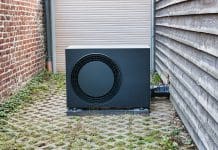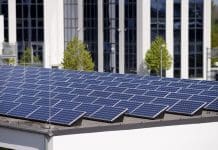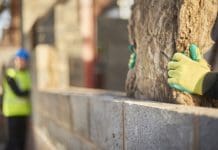Domestic air quality is put in the spotlight to deliver better outcomes for consumers – a White Paper by Steve Hodgson, Chief Executive of the Property Care Association
A growing population, high property values, housing shortages, and increased occupation density have contributed to the marked changes in the way in which we occupy homes in the UK. Alongside these changes, we have seen other things that have an impact on the internal environment of homes. The cost of fuel has risen rapidly. This has helped to drive measures that deliver greater fuel efficiency supporting international obligations on carbon reduction. Government backed programs that deliver insulation and draft proofing have also changed the ability for some buildings to shed atmospheric moisture.
Unfortunately, there can be a number of unintended consequences associated with draft proofing, insulation, reductions in fuel use and high levels of occupation. The most important and ultimately the most damaging is an increase in the moisture held in the air. This can lead to poor air quality, condensation, dampness and mould.
Moisture held in the air has always been of great importance to all surveyors that encounter problems associated with dampness and mould. While architects, developers and ventilation system designers have moved a very long way to satisfy the needs of modern living for the occupiers of new homes, those looking to adapt older properties may still struggle to find practitioners that can provide reliable, dependable guidance on ventilation and maintaining air quality.
In order to help remedy this and ensure the issue of domestic ventilation in existing buildings is brought into the spotlight, the PCA has moved to establish the “Residential VentilationGroup” (RVG). This working group will work alongside and complement existing sectors of PCA membership and will bring greater awareness and focus to the subject of ventilation. Problems with air quality are not limited to the
Problems with air quality are not limited to the effects of damp and airborne moisture. Air pollution caused by the release of volatile organics, Carbon Dioxide (CO2), and ground gases are all in the news right now. The associated horror stories of buildings abandoned and families forced out of their homes make worrying headlines for developers and homeowners.
The question of why these subjects are hitting the news now and what should be done is set out in the remainder of this article.
The Property Care Association’s area of detailed knowledge is centred on atmospheric moisture, but it’s probably fair to say that with the exception of ground gases the means of improving air quality are broadly the same.
As already highlighted, the way we are living in buildings is changing. A number of factors have an effect on the air that surrounds us in our homes. These include fuel costs, the drive to reduce energy use, efforts to reduce air leakage through draft proofing and insulation, increasingly sedentary lifestyles, reductions in the size of the spaces we occupy and a growing incidence of overcrowding. The most obvious and immediate symptom of these changes can be mould and damage to goods and finishes caused by elevated levels of atmospheric moisture. The appearance of damp and mould usually sets off a chain of events that eventually leads to the doors of professionals.
Experience tells us that the route to resolving problems with atmospheric dampness can be anything but quick and simple. It is often the case that a call to an expert member of the PCA is the last resort rather than the first. What is typically seen is a homeowner or tenant that has self-diagnosed the defect (as a condensation problem), attempts to engage with landlords, builders, insulation companies, friends and the internet, none of which help. Engaging an expert is often undertaken reluctantly. However, experts in this area will understand the significance of heating, will consider the building and the style of occupation, will look at the thermal performance of walls and floors and think about the provision for air exchange. Only when all the variables are understood can a reliable solution be delivered.
We believe that the frequency of problems associated with damp and mould resulting from indoor air is set to get much worse. The almost uncontrolled and irresponsible rush in recent years to install insulation quickly, coupled with the drive to eliminate “unwanted drafts” in older buildings is creating a huge unseen and as yet massively underestimated problem. The pressure of occupation on housing as well as the cost of fuel is set to move in one direction. With the promise of new initiatives to fund retrofit insulation on the horizon, we see this source of problems growing with time.
Heating, building design, insulation and water production must be considerations taken into account by those providing investigation and diagnosis of problems that cause dampness and mould. In a growing number of properties, it is discovered that ventilation and air exchange is inadequate and almost always find that it falls short of what is required by Approved Document F of the building regulation.
Understanding how to balance moisture production, insulation, energy input (heat) and ventilation as well as a good technical understanding of the science of air moisture and condensation is the key to eliminating condensation and mould. The surveyor can usually provide definitive advice on moisture production, heating and ventilation but have traditionally either passed the responsibility for the design of improved ventilation to a jobbing electrician who supplies what he thinks is about right.
Regulation and guidance setting out minimum requirements for domestic ventilation in homes is usually ignored or misunderstood and as a result, the outcomes for clients can be very mixed.
This is where the new Residential Ventilation Group will help create a point of reference and resource for homeowners to help them find the advice and expertise they need.
Knowledge gathering and the development of skills will be a key function of the group. To this end, the PCA has developed a training day that teaches surveyors and property professionals the importance of understanding and delivering solutions that meet or exceed the requirements of Approved Document F.
The Residential Ventilation Group will highlight the benefits of using skilled and competent professionals when considering residential air management in existing homes. It will provide direction and a resource for homeowners who want to partner with companies and individuals who specialise in providing the most appropriate and reliable solutions. For the first time, consumers will have the opportunity to find specialists that can accurately diagnose the causes of all forms of building dampness and be assured that the products and services they deliver are correct and appropriate for their needs.
This new section operating within the Property Care Association is supported by contractors, ventilation equipment manufacturers and specialist trainers and surveyors. The Residential Ventilation Group is an important development for the Association and its members. Its creation will help meet the needs of a rapidly growing and changing market and will deliver quality and assurance to consumers who until now must largely trust to luck when taking advice on ventilation and air management.
Steve Hodgson
Chief Executive
Property Care Association
pca@property-care.org
www.property-care.org
Twitter: @PCAPropertyCare













